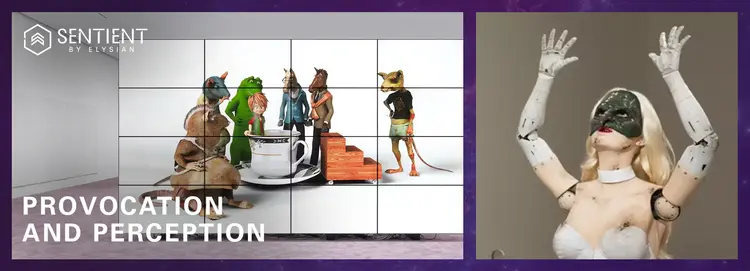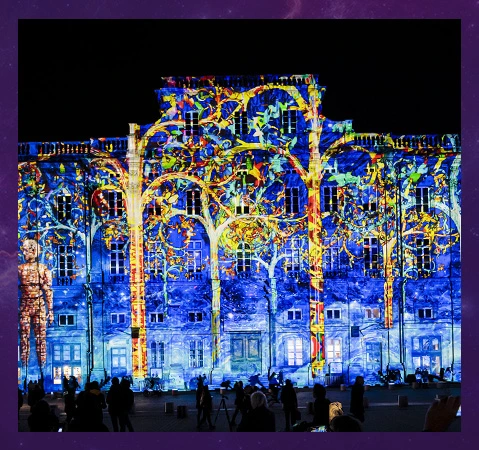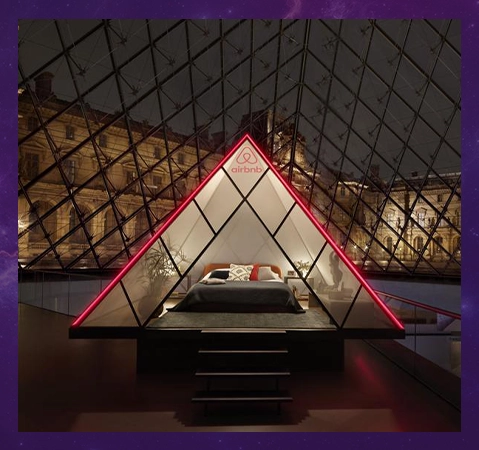
Artworks that Challenge Social Norms: Provocation and Perception
share

Summary:
This article delves into artworks that challenge societal norms, from Jordan Wolfson’s animatronic sculptures and VR pieces to Damien Hirst’s diamond-encrusted skull and Gustav Klimt’s sensual paintings. These artists use immersive environments, AI, and symbolism to provoke emotions, spark debate, and encourage viewers to question human experiences, life, and mortality. Art becomes a powerful tool to stimulate thought and evoke deep, sometimes uncomfortable, reflections.
Table Of Contents
Who is Jordan Wolfson, and why is his artwork so popular?
Damien Hirst’s ‘For the Love of God’
Symbolist painter Gustav Klimt
Intellectuals, philosophers, and rebels throughout history have used their views, expressions, and convictions to spark revolutions. However, there is one element of society that has always confused the layman: artists. Unlike other intellectuals, who can communicate their thoughts and ideas with clarity and purpose, artists frequently opt not to do so, perhaps to preserve the innocence of the artwork.
They communicate themselves in abstract, symbolic, or emotional terms, pushing the viewer to draw autonomous conclusions about what they perceive. Jordan Wolfson is one of those artists who challenges the audience. Wolfson is a controversial US artist known for making creepy-looking and provocative robotic sculptures, yet his work is nothing unusual.
Who is Jordan Wolfson, and why is his artwork so popular?
Jordan Wolfson, a New Yorker in his forties, is not your typical modern artist. He has always made headlines with his often-described "creepy" and renowned creations. He has developed a strange image for himself, with people labeling him "enfant terrible," "bad guy," and even "edge lord," as reported by the New Yorker Magazine. For those familiar with his work, such tags would come as no surprise. Nothing he says, creates, or explains is easy to understand, at least for the typical spectator.
He first gained attention in 2014 with his animatronic sculpture, Female Figure. This gory-looking female, dressed in nothing but white see-through cloth, a blonde wig, and a sad green mask, dances to Lady Gaga's "Applause" while striking eye contact with the nearest spectator. Wolfson employed AI to ensure that the woman catches the viewer's attention by making eye contact while performing sparkling but suggestive gestures. How can Sentient By Elysian's new dance craze go unnoticed? Their most recent engineering model includes AR screens that replicate spectator movements, resulting in two realities, similar to entering a parallel universe. Yikes!
In 2017, he shocked the art world with his VR artwork "Real Violence." Wolfson beats a guy to death in this work, which is not suitable for those with weak hearts. Many people may struggle to understand what Wolfson is trying to convey through his artwork. In an interview with Art Forum, he stated that he was not interested in suspense, illusion, or representation of violence but wanted to examine violence and its fundamental human response in his VR artwork.
The Body Sculpture, 2023

Another of Wolfson's works, the Body Sculpture, has left viewers stunned. While some call it "spectacular," others are not as impressed with what he has made this time. This Body Sculpture, which lacks a body of its own, is made up of square boxes with robotic arms dangling by chains and making provocative motions while performing. These actions are not typical of public behavior, but Wolfson describes the work as an examination of the universal sensation of being a living, breathing human. He wants to remind people of their underlying physicality.
The artwork has earned both praise and criticism, with some finding it uncomfortable to look at because human motions are vivid and can trigger the mind in a variety of ways.
Damien Hirst’s ‘For the Love of God’

When we hear Damien Hirst, the first thing that springs to mind is his tiger shark, which is kept in formalin and presented in a glass-paneled case. Hirst's artwork, titled "The Physical Impossibility of Death in the Mind of Someone Living," attempted to capture the essence of life in a dead body, allowing viewers to intimately observe death, the fragility of life, and physical degradation. The shark, which was initially displayed in 1992, cost Hirst a whopping 6,000 pounds at the time, with the entire artwork costing 55,000 pounds, and was commissioned by Charles Saatchi, co-founder of Saatchi & Saatchi Art Gallery. Today, the artwork costs around $8 million or more. It's thrilling, and it propelled Hirst to fame. Today, he is one of the Young British Artists.
After rising to prominence and repute in the 1990s, he has once again been the talk of the town with his artwork For the Love of God. The diamond-encrusted platinum skull of an 18th-century human, dubbed "the most expensive artwork in the world," is worth a stunning 15 million pounds. The skull, which is coated in 8,601 crystal-clear diamonds, features a massive pink diamond at the front of its cranium, weighing 52.4 carats alone, for a total weight of 1,106.18 carats.
This 2007 artwork has an unusual meaning. Hirst uses the decaying skull, the everlasting and noble metal platinum, and glittering diamonds, the symbol of love, to portray the continual mental battle between "life and death, beauty and decay, desire and fear, love and loss." No one knows where the skull is or if it was sold to a secret buyer. According to some, the item was never sold because of its exorbitant price. But, who knows!
Symbolist painter Gustav Klimt

Gustav Klimt, an Austrian symbolist artist, is one of the most well-known figures in the art world. His paintings have always had an impact on spectators, with some criticizing his use of the female figure as an object and others praising the beauty and sensuality he conveyed in his art.
Italian curator Massimiliano Siccardi introduced art aficionados to "Immersive Klimt," a show that aimed to present Klimit's paintings in a new way. The exhibition is a digital and hands-free immersive experience that includes a 20,000-square-foot lighting and sound arena with two-story projections of Klimit's most intriguing and controversial works.
The audience senses the spirit of the paintings when they examine them more attentively and understand the thought process behind them.
To wrap it up!
Time demonstrates that art has always been a potent force for stimulating thought, challenging logic, and eliciting emotions. Artists from ancient times to the present day have offered works that uncover the veil of human society and reveal the naked form in various mediums. Wolfson, Hirst, and Klimt are only a few names, yet they have been and will continue to be remembered for their incredible thought processes and emotions for decades to come. Animatronics, immersive settings, and artificial intelligence have the capacity to bring sensations, expressions, and pieces of imagination to life with astounding vividness.
Website | LinkedIn | Instagram | YouTube | Facebook

























